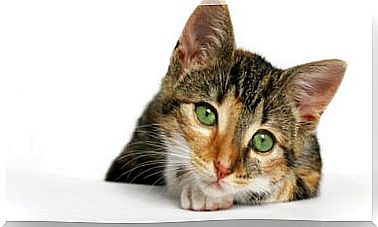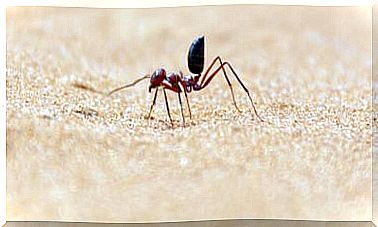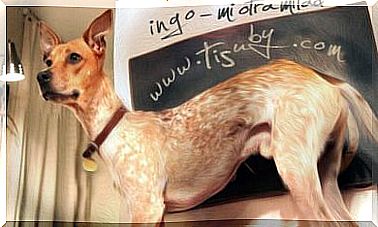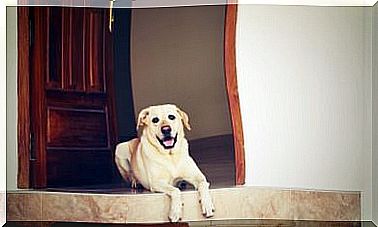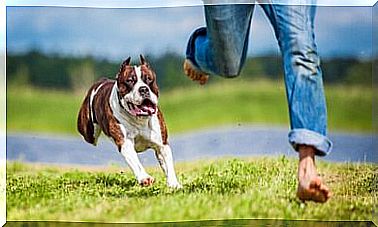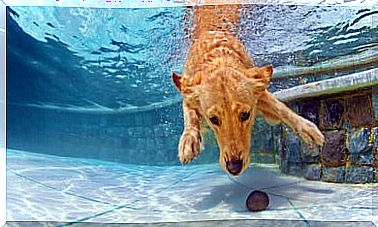Bengal, A Peculiar Breed Of Cats
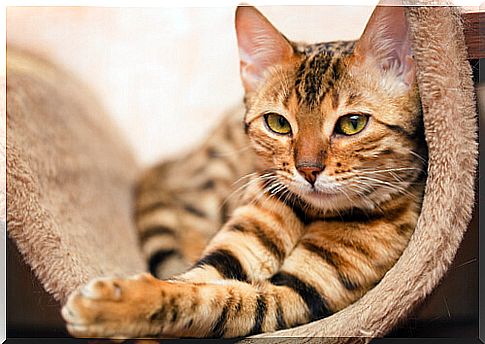
Product of the cross between a domestic cat and a leopard kitten -or Bengal in Hispanic countries-. This breed, originally from the United States, is considered a “hybrid” and stands out for its beautiful coat. In this article we will tell you all about the Bengal, a cat that is clearly special and different.
History of the Bengal Cat
At first glance, it makes us think of a wild cat. And this is because it originated in 1963 after the crossing (with human intervention) of a male domestic cat and a female Bengal cat. The name derives from the maternal scientific name: Prionailurus Bengalensis.
Although they have the same name and are distant relatives, this feline does not directly descend from the Bengal Tiger, but its wild ancestor is the leopard cat. Their ancestors live in and around Southeast Asia: Cambodia, China, Thailand, Malaysia, the Philippines, and Indonesia.
The objective of mixing wild cats with domestic cats was to get an animal with an exotic appearance but at the same time it had a docile character so that it could live in the houses as a companion animal. The first time this breed was exhibited was in 1985. Of course, the sensation it caused due to its striking appearance was sensational.
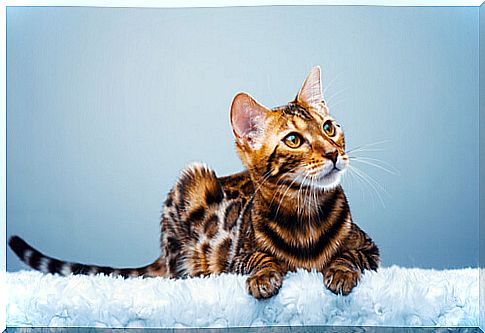
Although it may seem strange, the Bengali cat is a great swimmer. It is an unusual quality in a domestic feline, but it has its reason for being in its genetic heritage and its wild origin.
Physical characteristics
Regarding its physical appearance, we must know that the Bengal cat is muscular, robust and heavy boned. It is large and males can weigh up to 9 kg (females, on the other hand, can reach half the weight). Its tail is thick, its head is broad and rounded, its nose is elongated and its jaws are very strong. In addition, it has long limbs that give it an athletic and slim appearance.
The ears are small and the eyes, almond-shaped, have a striking greenish-yellow color. The coat and fur of this cat are another of its distinctive characteristics: it has short, thick hair, with a brown tabby “pattern” with spots. The base can be orange, beige, gold or yellow, and the spots can be chocolate, black or tan.
In fact, it is the fur that gives it its special appeal. At the time of the creation of this breed one of the main objectives was to get their hair to have these attractive colors. Also, the end of its tail is always black.
Bengal Cat Behavior
Although it may seem that we are facing a miniature leopard due to its great hyperactivity, curiosity and desire to play all the time, we are also facing a perfect pet, affectionate, intelligent and even closer to its owners than other cats.
In this way, it is not strange that he looks for his owner through the rooms, waits for him by the window or the door until he returns, likes to sleep near him or snuggles up next to him to purr and feel protected.
In addition, since the current Bengali breed is the result of several generations after the first cross, it already presents many of the aspects of a domestic cat used to contact with humans.
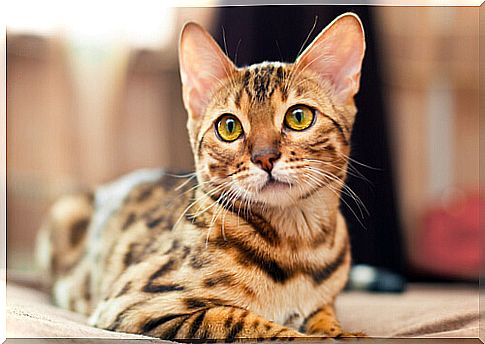
Thus, the mothers are already socialized at the time of delivery and the cubs are born and raised in a home. They do not present “alterations” of a wild nature, although, as in any feline, the moment of heat can be problematic. Setback that is quickly solved through sterilization.
Besides being a curious and cunning cat, he likes to have everything under control. There is nothing that can remain hidden from him for a long period of time. On the other hand, the Bengal Cat is very sociable, it has no problem relating to other pets, whether they are cats or dogs.
The Bengali cat is a feline that perfectly combines its wild and domestic side. He is easily startled, runs here and there, climbs on furniture, is very playful and extremely affectionate. In the case of having another cat at home, they will be inseparable companions of adventures (and messes).
